-
Car Reviews
- All reviews
- Midsize SUVs
- Small cars
- Utes
- Small SUVs
- Large SUVs
- Large cars
- Sports SUVs
- Sports cars
- Vans
Latest reviews
- Car News
-
Car Comparisons
Latest comparisons
- Chasing Deals
An EV forerunner, the Nissan Leaf quickly lost its advantage with the entry of Tesla. Can the latest E+ version of the battery-powered hatch deliver relevancy in 2023?
Now that the automotive world is well within the transition to widespread electric vehicle acceptance, it’s easy to forget who and what were the pioneers of the movement.
Though most will credit Tesla with the foresight to bring electric vehicles into the mainstream market, Nissan’s humble Leaf was actually here first, and was quite a bargain when it launched.
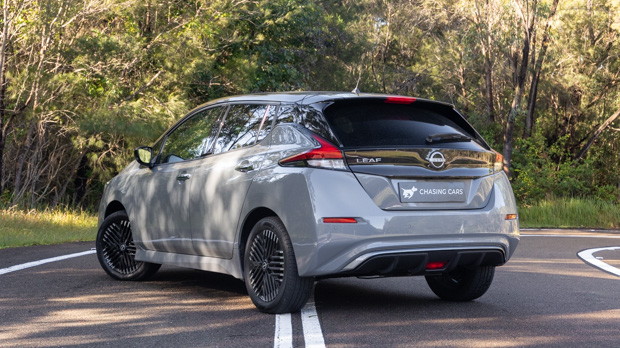
Back in 2012, Nissan’s local lineup was interesting to say the least. The entry point was a $13k Micra, while at the other end was the 400kW GT-R for a lofty $170,000.
Smack bang in the middle of this lineup was the Leaf, a relative bargain at $51,500. I say relative because with a maximum driving range of 170km, it’s of little surprise that not many punters jumped at first-generation electric motoring.
Nissan’s Leaf underwent its first update in 2019, which brought with it a hefty facelift and an improved driving range with the introduction of the Leaf E+.
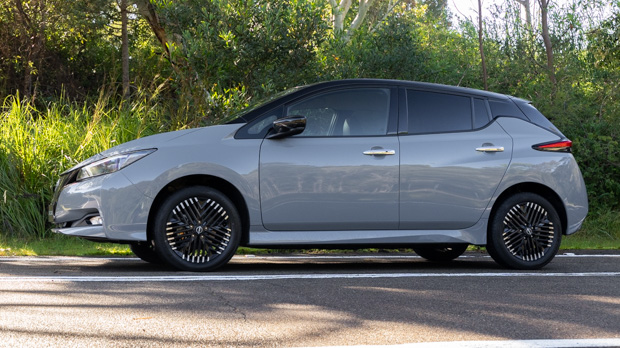
Drivers could now travel up to 270km between charges, something that was quickly overshadowed by the introduction of the Tesla Model 3 the same year, which stole the EV show with its 460km range offered on the entry-level model.
Now if we jump forward again to the modern day, Nissan has updated the Leaf again. The current lineup still consists of two variants in the regular Leaf and the high-spec E+.
Pricing has remained relatively unchanged for the entry-level variant at $50,990, while the E+ sits at $61,490, both before on-road costs.
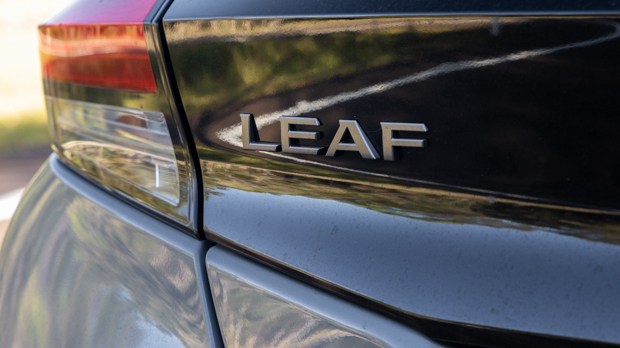
At this price, the Leaf E+ is $500 more expensive than the Tesla Model Rear-Wheel Drive, which is some serious competition.
So has Nissan done enough with the new Leaf E+ to make it a strong contender against its rivals? Or is it still a little too pricey for what it is?
As mentioned, the entry point for Nissan’s lineup in Australia is the basic Leaf, at $50,990 before on-road costs.
This Leaf is powered by a 39kWh (usable) battery that provides the electric hatch with up to 270km of driving range according to the WLTP testing cycle, compared to 385km for this Leaf+ model.
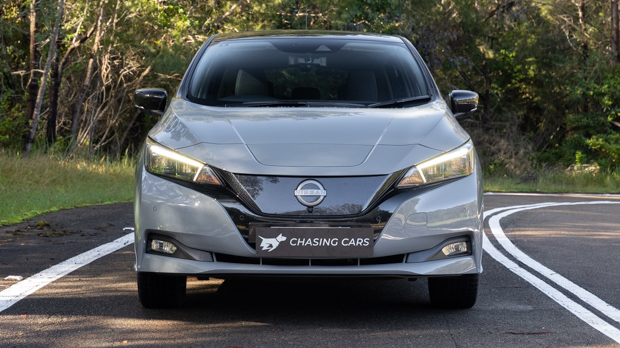
The standard Leaf can be charged at up to 50kW using a DC fast charger and Nissan claims it will take 60 minutes to charge from 20 to 80 percent.
A single motor situated on the Leaf’s front axle produces 110kW and 320Nm, and drives the front wheels exclusively.
On the outside, standard kit includes 17-inch alloy wheels, power folding mirrors, and a rear spoiler.
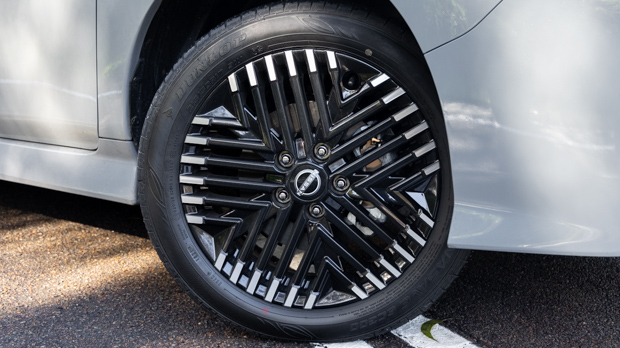
In the cabin it gets a 7.0-inch analogue cluster and an 8.0-inch infotainment screen with satellite navigation, as well as wired Apple Carplay and Android Auto.
The seats are covered in a leather-accented material. Though these are manually adjusted, they do get a heating function.
Moving up to the Leaf e+ represents a $10,500 jump and it will set buyers back $61,490 before on-road costs are added.
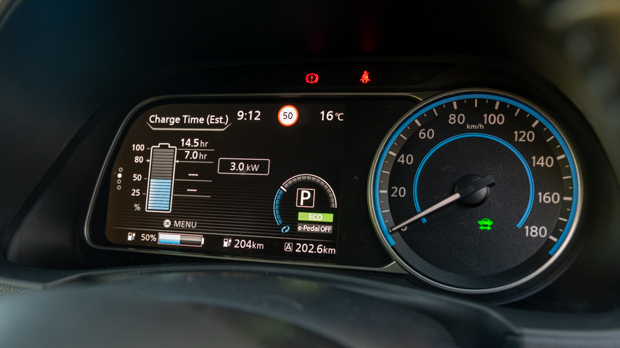
Standard equipment is almost identical between the two models, but the biggest differences is the E+ driveline.
This range-topping Leaf E+ gets a significantly larger 59kWh (usable) battery, and in doing so, increases its range figure to 385km (WLTP).
However, our real-world testing found that the Leaf+ achieves just 339km range at highway speeds, which is less than the BYD Atto 3 (366km) or Cupra Born (469km).
The Leaf+ is charged via an old-school Chademo port, with a maximum charging rate of 100kW. Nissan claims that this allows it to charge from 20 to 80 percent in 45 minutes.
However, when using either a 50kW fast charger or a wallbox via the 6.6kW on-board charger, the E+ charging takes about 50 percent longer than the base Leaf.

The electric motor on the front axle of the E+ produces 160kW/340Nm, so performance is also enhanced over the entry-level model.
Both versions offer one-pedal drive mode.
On the road, the Nissan Leaf E+ is a little underwhelming compared to other EVs in its price bracket.
If you can imagine what an all-electric Toyota Corolla would drive like, then you’re halfway to experiencing life behind the wheel of the Leaf E+.
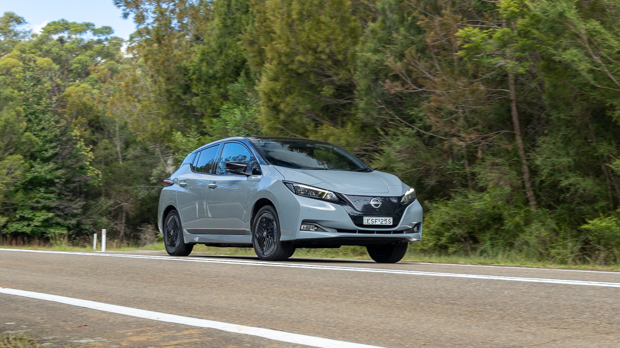
With 160kW/340Nm on tap, the flagship Leaf is no slouch on the road, managing a 0-100km/h time of seven seconds flat during independent testing with Chasing Cars against its official 6.9sec claim.
Off the line, the immense amount of torque easily overpowers the relatively thin eco tyres, and after the flurry of tyre chirps and traction control intervention comes to an end, drivers are rewarded with strong acceleration.
As is the case with most electric vehicles that prioritise efficiency, this feeling of strong acceleration tapers off around the 60km/h mark. Nissan claims a 157km/h top speed for the Leaf E+, but I’m not sure you’d find many drivers brave enough to complete such a feat.
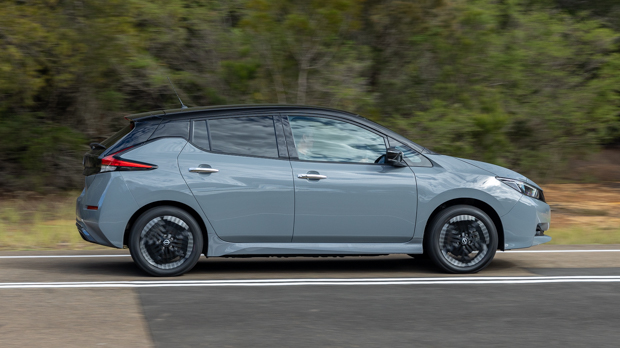
Above the gear selector sits an ‘eco’ button that drastically changes the way the Leaf E+ drives. When selected, the driving range figure extends by around 20km, but this comes at the cost of the sharp electric acceleration.
In this mode, the Leaf loses some of its electric novelty, and feels far more akin to an eco-friendly petrol-powered hatchback.
In saying this, I can imagine many Leaf drivers will use eco mode most of the time, as not many buyers are shelling out for this electric Nissan with straight-line performance as a priority.

Though the ride offered by the Leaf is nothing worth writing home about, it isn’t particularly rough, either. With a torsion beam rear axle, rough urban roads can be punishing at times to deal with, but it isn’t anything near the harshness of, say, the Hyundai i20 N hot hatch.
As is the case with most vehicles, highway speeds do wonders to hide the discrepancies in the ride, and cruising at 100km/h is quite comfortable.
Though the Leaf is very competent on the performance front in a straight line, its cornering abilities are rather lacklustre.

Usually, EVs are quite fun to drive through bends due to the fact that the centre of gravity is kept extremely low by the batteries that are mounted beneath the floor.
But for reasons unbeknownst to me, the floor-mounted batteries don’t seem to have the same effect in the Leaf, with the body control feeling wayward at times through corners.
This isn’t to the point that drivers will see lift off oversteer mid corner, but the body roll I experienced behind the wheel wasn’t something that I expected. For the record, the 1736kg (kerb) E+ is quite a bit more portly than the 1594kg regular Leaf.

Brake pedal feeling is something that now many EV manufacturers do get right, and this is exactly the case here. Well, for the most part.
One-pedal driving is seemingly encouraged by the car, but when drivers opt for old-fashioned two-pedal driving, it’s a strange affair.
The issue isn’t as much when the car is on the move, but once stopped, there doesn’t seem to be a stopping point in the brake pedal’s range, and it feels extremely spongey underfoot.
I’m sure this is something that owners will get used to over time, but is a little unnerving to experience at first.
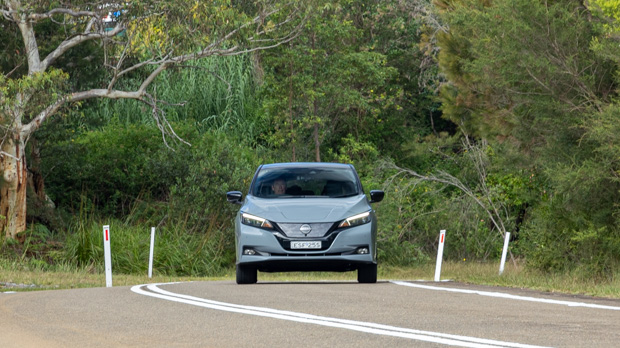
As a whole, the Nissan Leaf provides a reasonably refined driving experience. Road noise is noticeable, but that seems mostly because the powertrain is so remarkably silent.
The driving experience isn’t game-changing in any regard, but that’s only down to the fact that the Leaf is quite an old vehicle in a segment where electric vehicle innovation is rife.
If I was an EV buyer looking to get into something fun, I’m not sure that the Leaf would be at the top of my list, but it’s a perfectly unremarkable drive that won’t necessarily disappoint many buyer tastes and preferences.
On the inside, the interior of the range-topping E+ is no different to what you get with the entry-level model.
That said, the cabin fit-out goes some way to fitting the plus-$60K bill you fork out for with the Leaf E+.
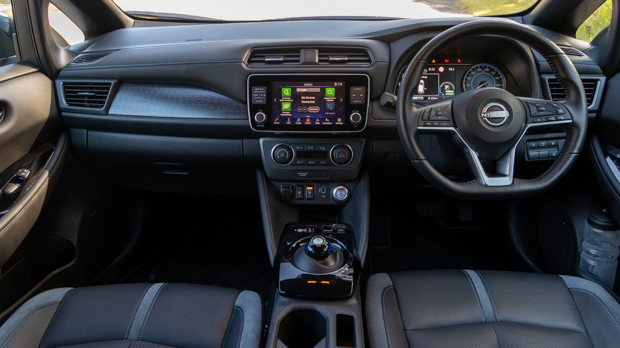
It features soft leather covering the majority of surfaces and this is contrasted by piano black and textured plastic on the centre console.
The leather-wrapped steering wheel is also a nice addition, although I’m not quite sure why Nissan opted to go with the flat-bottom look here.
But while the leather-accented seats are comfortable enough, the lack of power adjustment feels like a missed opportunity at this price point. It’s a similar story for the heating system, as I’ve found that ventilated seats are worth their weight in gold in Australia and the Leaf misses out here, too.
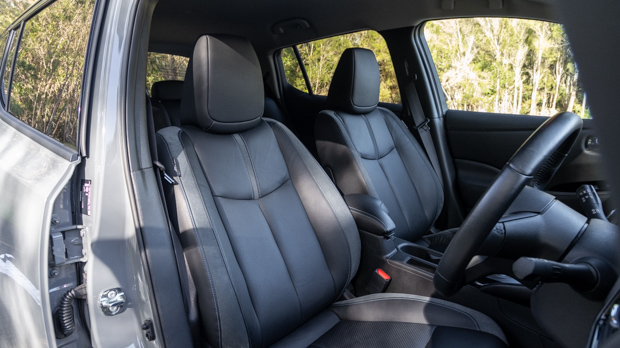
The 8.0-inch infotainment screen is nice enough to use by itself, but the surrounding buttons and dials date the system on the aesthetic front.
It’s an eternal personal gripe, but having to plug your phone in to get Apple Carplay or Android Auto working feels a little low rent in an EV at this price point. That said, the system supports the software well.
Though the Leaf does get an old-fashioned analogue speedometer, the majority of the area behind the steering wheel is taken up by a 7.0-inch digital cluster that displays range, efficiency, etcetera.

An analogue cluster does feel a little strange in a modern EV, though drivers are able to configure the digital display to show speed if a figure is preferred.
Considering that a head-up display is standard in most of Nissan’s higher-spec models, the fact that the Leaf E+ misses out on one is interesting.
The second row provides an adequate amount of space for a pair of adult passengers, with comfort levels significantly dropping if a third occupant is seated in between.
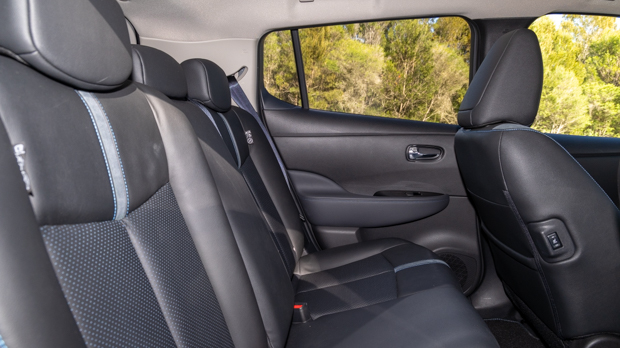

This isn’t helped by the enormous transmission tunnel that runs through the middle of the car, significantly cutting down leg room for the centre passenger.
However if you are looking to fit baby seats this will be less of an issue. During our testing we found our rearwards-facing seat was more of a tight squeeze than we might have liked but the forwards-facing variant had no major issues and would work fine for people with slightly older children.

Behind the rear seats, there’s 435L of boot space, a figure that extends to 1176L when the rear seats are folded.
It’s worth noting that this figure doesn’t change between the two variants in the Leaf range, meaning that the larger battery of the E+ doesn’t impede on luggage space.
Safety is an interesting topic when it comes to the Leaf E+. While the regular Leaf scored a five-star ANCAP rating back in 2018, it only applies to the “40kWh variants” and the E+ variant introduced in 2021 remains untested.
In saying this, the same active safety systems are shared across the range in Australia..
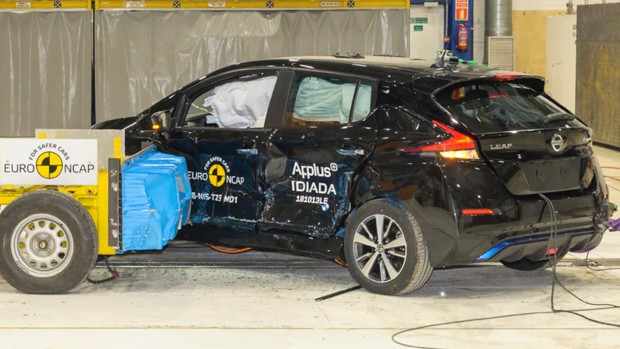
The safety suite includes systems such as adaptive cruise control, automatic emergency braking with pedestrian detection, lane departure warning, blind spot monitoring and rear cross-traffic alert, among others. An acoustic vehicle alert system functions at speeds up to 30km/h.
Like all Nissan systems, these are well-tuned for Australian roads, with the lane-keep assist offering more guidance than dictation as to where it leads the car.
The same goes for the cruise control system, which holds speed remarkably well when heading down a hill, or following a vehicle uphill.
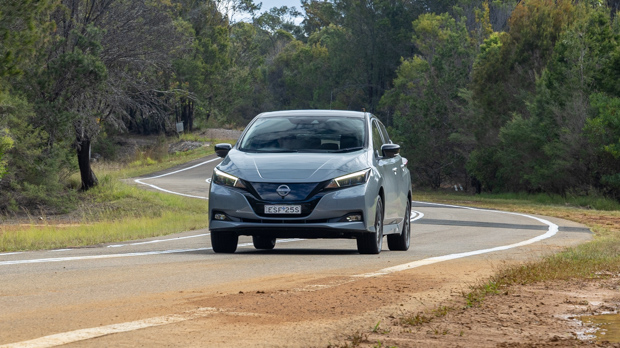
Nissan Leaf E+ safety inclusions:
During an independent range test conducted by Chasing Cars, we found that the Leaf E+ couldn’t quite match the WLTP rating of 385km and instead returned a real-world figure of 339km.
The test also found that the Leaf uses 18.8kWh/100km, which is a little higher than the 16.5kWh/100km that the BYD Atto 3 did throughout the same test.

In terms of servicing, Nissan offers a capped-price plan for the Leaf that will cost owners $2164 over a six-year or 120,000km period. Service intervals occur every 12 months or 20,000km.
The Leaf is also covered by Nissan Australia’s five-year, unlimited-kilometre warranty.
As a whole, I’m under the impression that the Leaf was a car ahead of its time, once upon a time. But now, it seems stuck in an awkward position due to Nissan global’s hesitation around BEVs.
Nissan had an incredible head start in the electric vehicle market, but the Leaf was the right car at perhaps a less than ideal time, so the EV didn’t experience the levels of success that it might have otherwise deserved.
Now the Leaf feels like a somewhat overpriced and underwhelming option in the face of a fast-moving electric vehicle market that’s been headlined, in the popularity stakes, by Tesla’s Model 3 for almost four years now.
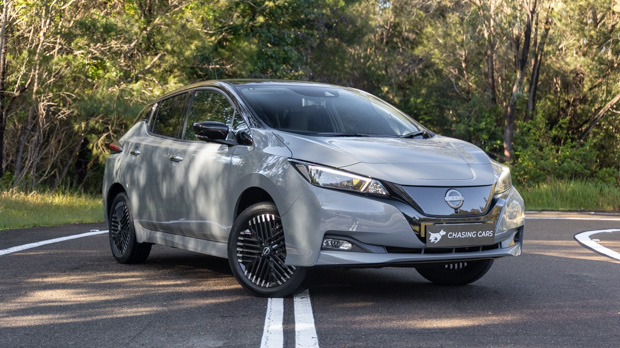
With a pretty average driving range and a relatively hefty entry price, the proposition of the Leaf is a hard one to go for.
Further to this point, I’m not sure that I’d be recommending the E+ when relatively newer EVs such as the BYD Atto 3 and the Cupra Born have already proven themselves to be competitive and more enticing in many critical areas.
If Nissan is able to find a way to reduce the price of the Leaf in Australia then I’m sure more would flock to it, but until then, it’s going to be playing second fiddle to the likes of Tesla, Cupra, and soon to be Volkswagen with its electric ID lineup.
Key specs (as tested)
About Chasing cars
Chasing Cars reviews are 100% independent.
Because we are powered by Budget Direct Insurance, we don’t receive advertising or sales revenue from car manufacturers.
We’re truly independent – giving you Australia’s best car reviews.
The estimate provided does not take into account your personal circumstances but is intended to give a general indication of the cost of insurance, in order to obtain a complete quote, please visit www.budgetdirect.com.au. Estimate includes 15%^ online discount.
^Conditions Apply
Budget Direct Insurance arranged by Auto & General Services Pty Ltd ACN 003 617 909(AGS) AFSL 241 411, for and on behalf of the insurer, Auto & General Insurance Company Limited(ABN 42 111 586 353, AFSL 285 571).Because we don’t know your financial needs, we can’t advise you if this insurance will suit you. You should consider your needs and the Product Disclosure Statement before making a decision to buy insurance. Terms and conditions apply.
Indicative quote based on assumptions including postcode , 40 year old male with no offences, licence suspensions or claims in the last 5 years, a NCD Rating 1 and no younger drivers listed. White car, driven up to 10,000kms a year, unfinanced, with no modifications, factory options and/or non-standard accessories, private use only and garaged at night.
^Online Discounts Terms & Conditions
1. Discounts apply to the premium paid for a new Budget Direct Gold Comprehensive Car Insurance, Third Party Property Only or Third Party Property, Fire & Theft Insurance policy initiated online on or after 29 March 2017. Discounts do not apply to optional Roadside Assistance.
2. Discounts do not apply to any renewal offer of insurance.
3. Discounts only apply to the insurance portion of the premium. Discounts are applied before government charges, taxes, levies and fees, including instalment processing fees (as applicable). The full extent of discounts may therefore be impacted.
4. We reserve the right to change the offer without notice.